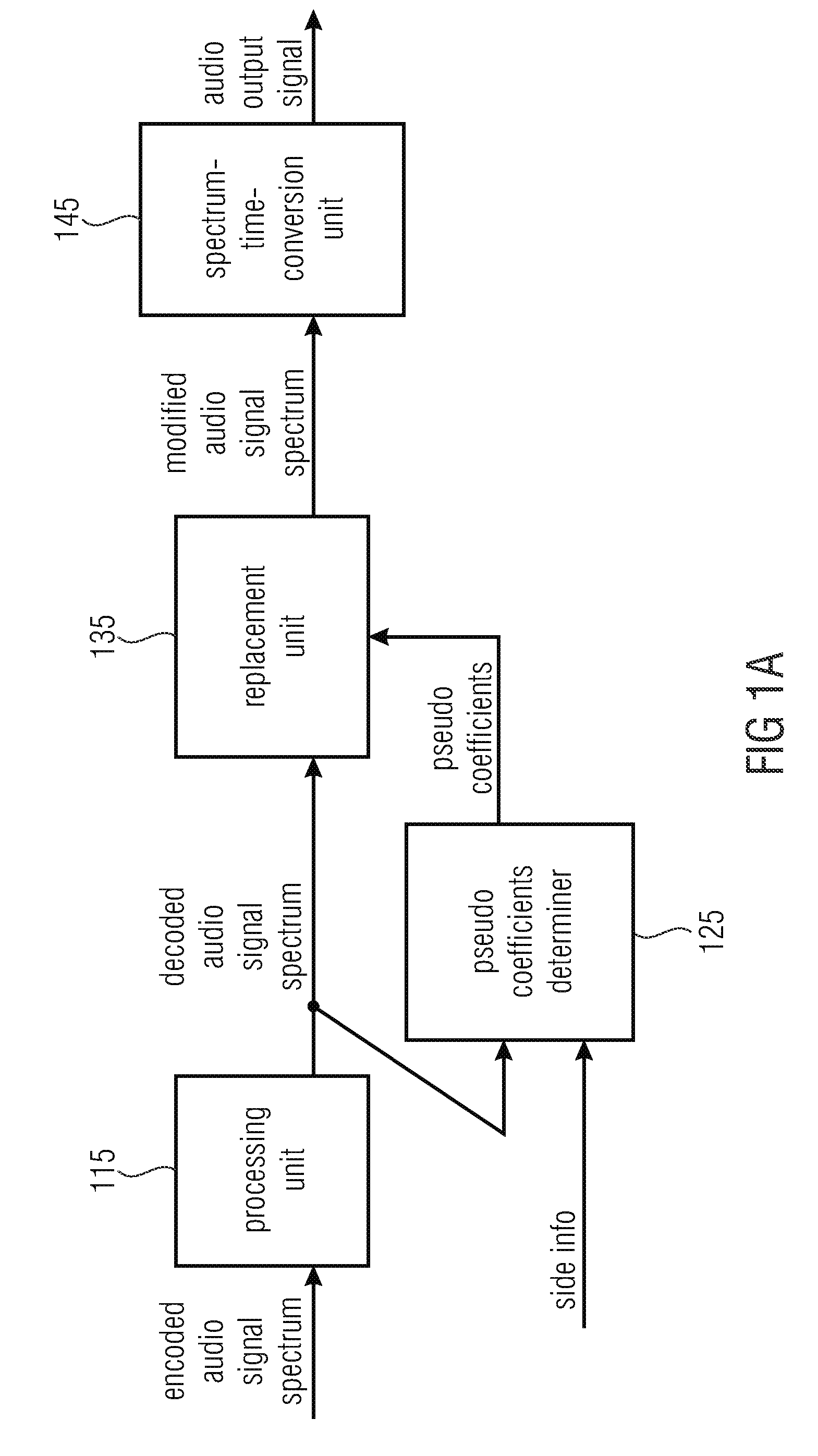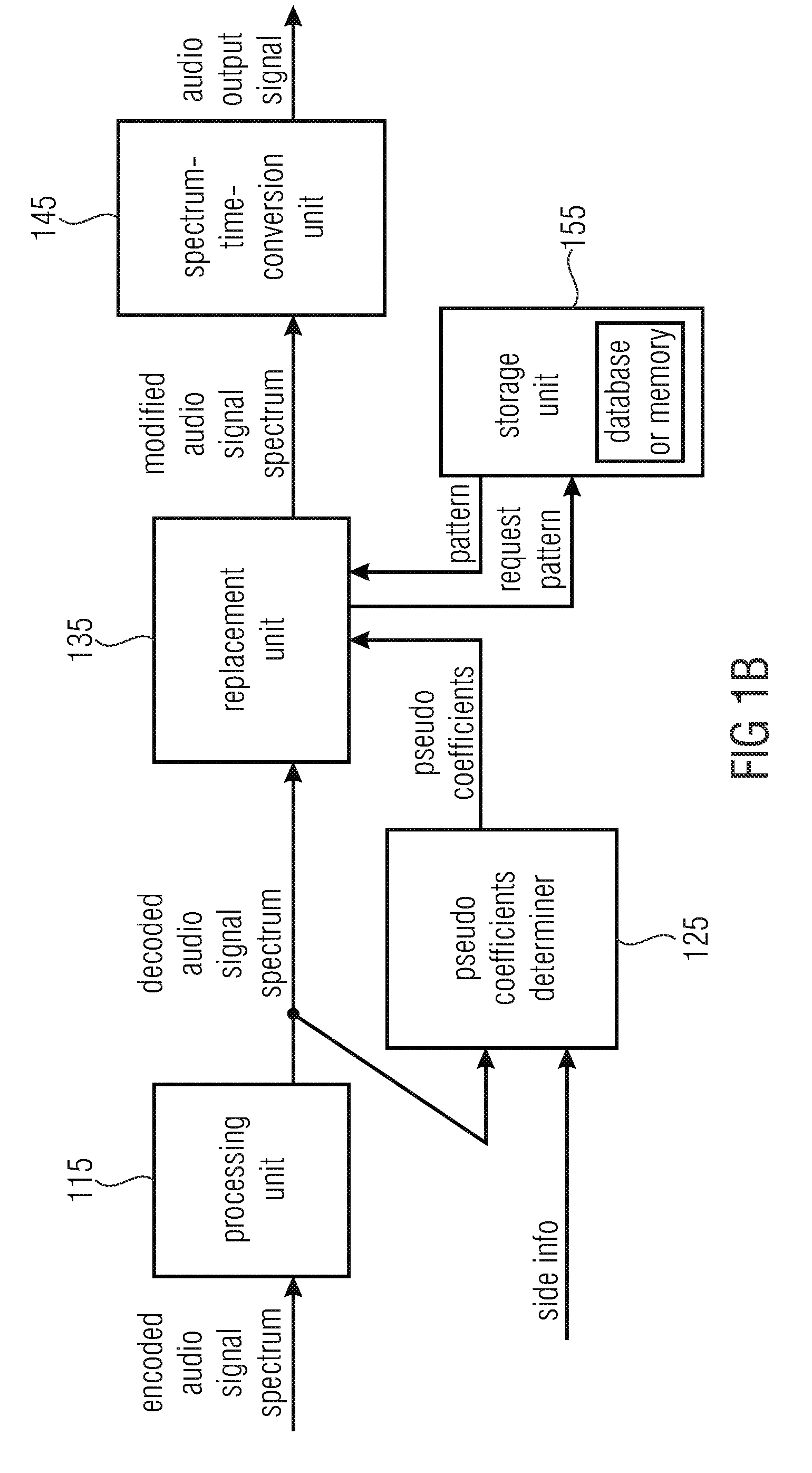Apparatus and method for efficient synthesis of sinusoids and sweeps by employing spectral patterns
a spectral pattern and sinusoidal technology, applied in the field of audio signal encoding, decoding and processing, can solve the problems of compromising the perceptual quality of such codecs, affecting the quality of coding audio at sufficient quality, and low permissible latency
- Summary
- Abstract
- Description
- Claims
- Application Information
AI Technical Summary
Benefits of technology
Problems solved by technology
Method used
Image
Examples
Embodiment Construction
[0096]FIG. 7 illustrates an apparatus for encoding an audio signal input spectrum according to an embodiment. The apparatus for encoding comprises an extrema determiner 410, a spectrum modifier 420, a processing unit 430 and a side information generator 440.
[0097]Before considering the apparatus of FIG. 7 in more detail, the audio signal input spectrum that is encoded by the apparatus of FIG. 7 is considered in more detail.
[0098]In principle any kind of audio signal spectrum can be encoded by the apparatus of FIG. 7. The audio signal input spectrum may, for example, be an MDCT (Modified Discrete Cosine Transform) spectrum, a DFT (Discrete Fourier Transform) magnitude spectrum or an MDST (Modified Discrete Sine Transform) spectrum.
[0099]FIG. 8 illustrates an example of an audio signal input spectrum 510. In FIG. 8, the audio signal input spectrum 510 is an MDCT spectrum.
[0100]The audio signal input spectrum comprises a plurality of spectral coefficients. Each of the spectral coeffici...
PUM
 Login to View More
Login to View More Abstract
Description
Claims
Application Information
 Login to View More
Login to View More - R&D
- Intellectual Property
- Life Sciences
- Materials
- Tech Scout
- Unparalleled Data Quality
- Higher Quality Content
- 60% Fewer Hallucinations
Browse by: Latest US Patents, China's latest patents, Technical Efficacy Thesaurus, Application Domain, Technology Topic, Popular Technical Reports.
© 2025 PatSnap. All rights reserved.Legal|Privacy policy|Modern Slavery Act Transparency Statement|Sitemap|About US| Contact US: help@patsnap.com



